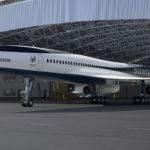Image: The Boeing Company
Boeing has released new projections for the commercial jet market over the next two decades, which suggests a global demand for 42,595 new commercial jets by 2042, valued at $8 trillion. The Asia-Pacific markets are expected to represent more than 40% of that demand, half of which comes from China.
“The aviation industry has demonstrated resilience and adaptability after unprecedented disruption, with airlines responding to challenges, simplifying their fleets, improving efficiency and capitalising on resurgent demand,” said Brad McMullen, Boeing senior vice president of Commercial Sales and Marketing. “Looking to the future of air travel, our 2023 CMO reflects further evolution of passenger traffic tied to global growth of the middle class, investments in sustainability, continued growth for low-cost carriers, and air cargo demand to serve evolving supply chains and express cargo delivery.”
Boeing’s projections key trends through 2042 include:
South Asia’s fleet will expand more than 7% annually, the world’s fastest rate, with India accounting for more than 90% of the region’s passenger traffic.
North America and Europe each will account for about 20% of global demand.
Low-cost carriers will operate more than 40% of the single-aisle fleet in 2042, up from 10% 20 years ago.
After omitting demand for Russia and Central Asia in last year’s CMO due to uncertainty in the region, this year’s forecast covers Russia and Central Asia in the Eurasia region, which comprises about 3% of the global fleet by 2042.
Commercial Services forecasts a total served market worth $3.8 trillion, including digital solutions that increase efficiency and reduce cost; robust demand for parts and supply chain solutions; growing maintenance and modification options; and effective training to enhance safety and support the pilot and technician pipeline.
Also in the 20-year forecast period, Boeing anticipates demand for these models:
New single-aisle airplanes will account for more than 75% of all new deliveries, up slightly from the 2022 outlook, and totalling more than 32,000 airplanes.
New widebody jets will be nearly 20% of deliveries, with more than 7,400 aircraft enabling airlines to open new markets and serve existing routes more efficiently.
Air cargo will continue to outpace global trade growth, with carriers requiring 2,800 dedicated freighters. This includes more than 900 new widebodies as well as converted narrow-body and widebody models.

